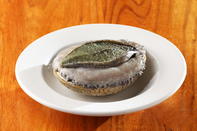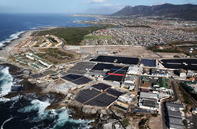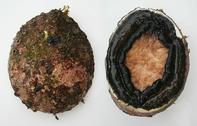
In order to sustain and protect wild populations of abalone, these highly-prized and delectable sea snails are bred in technologically controlled abalone farms along the South African coast.
Land-based flow-through systems using seawater are the most common abalone farming systems used in the South African abalone industry. However, ocean-based abalone farming is also done in South Africa. This is called ‘ranching’. A ranching operation, where abalone is re-seeded in the ocean, has been permitted in the Eastern Cape. This permits this operation to produce 28 tonnes of abalone per year.
History of Abalone Farming in South Africa

With the decline of fishing after World War II, a pioneering abalone farm was started in Hermanus in the Overstrand, a coastal town about 120 km east of Cape Town. Today abalone is farmed along the South African coast, from Saldanha in the West Coast and along the southern coast up to the east coast.
Commercial diving of wild abalone started in the 1940s with up to 3000 tonnes per year. Then, the harvesting of wild abalone was not regulated, but in the late 1980s commercial quotas were introduced. From 2008, and 2010 no commercial abalone fishery was allowed due to dwindling wild abalone stocks.
The decrease was due to illegal harvesting and changing ecosystems, with the bulk of illegal abalone being sold in Asia, through channels in Hong Kong. In 2010 an annual quota of 150 tonnes was allowed. Recreational harvesting of abalone is not allowed.
The total allowable catch (TAC) for the 2018/2019 season was increased from 50 to 96 tones after an appeal by quota holders.
Wild vs Farmed Abalone
Wild abalone, in South Africa, may only be harvested by quota holders and is harvested by divers during specified harvesting seasons, while farmed abalone is available all year round.
In the Eastern Cape, abalone seed was restocked in the ocean and a permit for the export of 7 tonnes of abalone from this ‘ranching’ system was granted by the Departement of Agriculture, Forestry and Fisheries (DAFF).
Wild Coast Abalone farm, Ulwandle Fishing and Rhodes University collaborated to reseed the depleted abalone stocks in the ocean between Cape Recife and Noordhoek. This area is patrolled to prevent poaching.
Abalone Species

There are between 100 and 130 abalone species in the world, of which five abalone species are endemic to South Africa. These are Haliotis midae, Haliotis parva, H. spadicea, H. queketti and H. speciosa.
Haliotis midae is the biggest of them, growing to 230 mm in size. It is the only farmed species in South Africa and is also known as ‘perlemoen’ in Afrikaans. It refers to the shimmering mother of pearl layer on the inside of the abalone shell.
Other names for abalone include Venus’ ears, muttonfish in Australia, pāua in New Zealand and ormer in the Jersey and Guernsey islands.
Abalone Producers
The abalone market is dominated by China and Korea, followed by South Africa, which is the third largest abalone producer in the world. Comparative production figures in 2015 of these three countries are 50 000 (China), 10 000 (Korea) and 1 450 (South Africa).
About 95% of Chinese abalone are produced in sea-based farms with abalone grown in cages suspended from longlines.
Other abalone producers include the USA, Mexico, Australia, Ireland and Iceland. Worldwide more than 15 species of abalone are farmed.
By Marinda Louw